7+ Sample Monthly Business Report
-
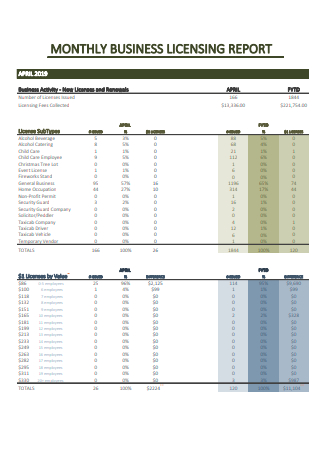
Monthly Business Licensing Report
download now -
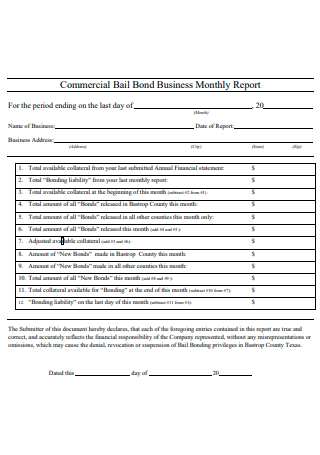
Monthly Commercial Bond Business Report
download now -
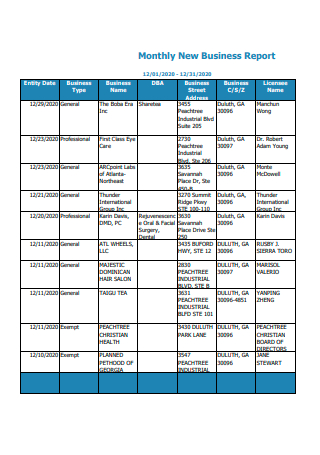
Monthly New Business Report
download now -
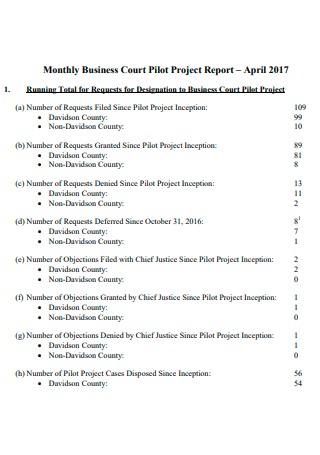
Monthly Business Court Pilot Project Report
download now -
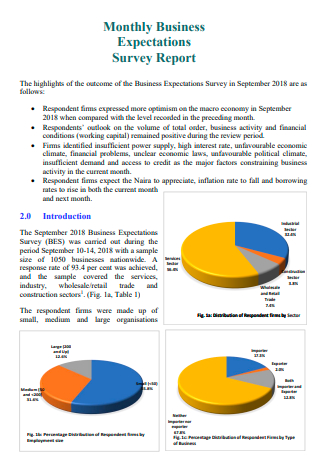
Monthly Business Expectations Survey Report
download now -
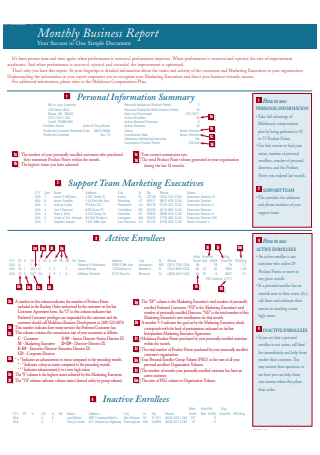
Monthly Business Report in PDF
download now -
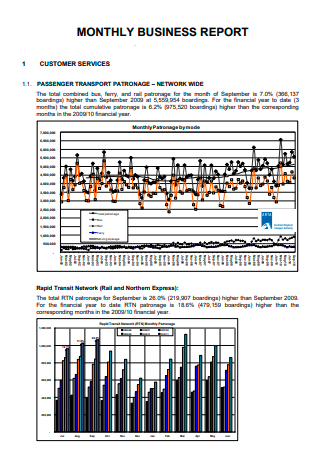
Printable Monthly Business Report
download now -
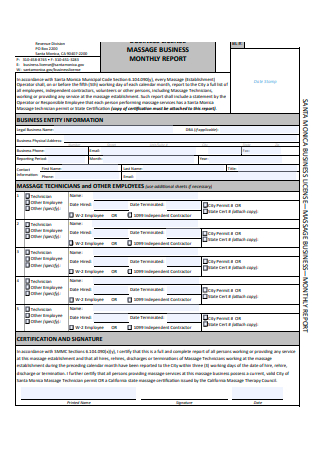
Monthly Massage Business Report
download now
FREE Monthly Business Report s to Download
7+ Sample Monthly Business Report
a Monthly Business Report?
Benefits of Monthly Reports
Types of Business Reports
How To Write a Monthly Business Report
FAQs
What is the format of a report?
How are business reports referred to?
What characteristics define an effective report?
What Is a Monthly Business Report?
Monthly business reports are financial statements and performance reports prepared monthly by internal stakeholders or external specialists. Monthly business reports summarize and evaluate your company’s financial and operational performance on a month-to-month basis. These reports help your management team monitor your company’s historical and current performance and aid them in making good business decisions. In 2019, startups failed at a rate of approximately 90%. According to business founders, reasons for failure include running out of money, being in the wrong market, a lack of research, inefficient collaborations, poor marketing, and not being an industry expert.
Benefits of Monthly Reports
Consistent monthly business reporting is critical for many businesses, as the board of directors may require weekly, monthly, quarterly, or annual reports to understand the business’s performance. Across all business sectors, from eCommerce to the service industry, business monitoring and reporting may save time and money while also improving your operations over time.
Types of Business Reports
Firm reports offer several forms of vital information about a business, such as facts, data, and an analysis of the current condition. The primary purpose of reports is to offer critical information to companies for planning and effective decision-making processes such as expansions and investments. The information contained in a report can be used to create business plans, budgets, and advertising decisions, among other things. Formatting various company reports is vital since you want to ensure that the report is easily legible and instantly recognizable without leaving out any critical information. Firm reports are unquestionably a critical component of any business. There are numerous varieties of company reports, each tailored to a specific requirement or circumstance. Among them, the following stand out:
Fact-Finding Business Report
A business encounters a variety of scenarios that necessitate the discovery of facts. Consider the rivalry between the manager and an associate or the breakdown of machinery on the manufacturing premises. These instances necessitate in-depth reasoning. In these instances, the fact-finding report is advantageous since it presents information from a third-person perspective. These reports are forwarded to upper management, who instantly take appropriate action in response to the issue.
Problem Solving Business Report
Business reports that aid in resolving an issue do so by proposing or suggesting an action plan for a particular circumstance. Additionally, the report discusses the causes of such difficulties and concludes with various methods that might be used to resolve the issue. Additionally, this paper discusses how to avoid the situation in the future by taking specific procedures.
Performance Report
The management wishes to be informed frequently about the performance of each department. Apart from that, the administration wants to know about new branches, new personnel, performances of the employees who are due for promotions. This information is analyzed in the performance report. These reports are critical in assisting management in making a choice. As a result, these reports are prepared by the seniors of the departments, branches, or specific individuals.
Majority Report
Generally, the members of a committee, including the chairperson, reach unanimous conclusions. A single report is prepared and submitted to the official committee in these instances. Otherwise, the bulk of members produce and submit their reports to the proper authorities. This is referred to as the majority report.
Minority Report
A special committee is formed to submit a report based on an examination into a particular subject. Three members may be chosen to constitute the final committee, with each member serving as chairman. If members disagree on an issue, the report may be presented individually by the other members. Minority reports refer to the special reports submitted by dissident members.
Research Report
The most comprehensive of all report categories are research reports. Generally, these studies are required when a business seeks to grow into new markets, such as expanding into a new geographical region or offering a new product. These are the most time-consuming and complex forms of company reports to prepare.
Verbatim Business Report
A verbatim business report is created by secretaries or someone else who captures verbatim conversations during a business meeting. For instance, a business meeting may approve a resolution appointing an auditor, and the solution is documented verbatim as a verbatim report. Again, when different members’ votes are weighed jointly, the verbatim reports include names, methods of voting, and the results. These reports are distinct from meeting minutes, which serve as a recap of the actions and decisions.
How To Write a Monthly Business Report
Business writing is a necessary skill for anyone pursuing a career in nearly any industry. However, commercial communication, and specifically business writing, is considerably different from scholarly communication. As a result, many young and ambitious professionals face anxiety when writing their first business report. In any case, there is no cause to be concerned about producing a monthly business report: there are various stages that will assure a well-organized piece of work and a straightforward, structured narrative.
Step 1: Ascertain that you comprehend the aim of your report.
What is the definition of a business report? While there are numerous business reports, each is a unique document intended for a specific professional audience. The first step before writing is determining what to write. Many people disregard this guideline, resulting in lengthy and convoluted manuscripts.
Step 2: Create a structure that is effective for your objective.
Once you’ve determined what has to be mentioned, begin drafting your business report template. The report’s sections are organized primarily according to its format. Formal report formats require all statistics and data, official and explicit language, and a predetermined and tight structure. In contrast, informal report formats allow slight deviations in language, style, and section layout. The primary distinction between report forms is the font size of the writing. Informal reports can take the form of memos, letters, or even emails.
Step 3: Pay attention to your wording.
Because time is money, a business report’s narrative should be as brief as feasible. Unlike academic writing, where the most important ideas are mentioned and clarified in the middle of the text, business writing principles advocate getting to the point as quickly as possible. The report should be written in a precise tone and include accurate language. Although the report’s intended readership is likely to be familiar with the professional vocabulary, it should be avoided. The paper should be formatted by the manual of writing styles applicable to the firm’s field of research and work. For instance, it should be formatted in the report is based on a sociological survey and is meant for social workers. Certain aspects of the content, however, can be formatted according to the company’s specifications.
Step 4: Use illustrations to back up your points.
Like the motto “a picture is worth a thousand words” is well-known, a business report will profit from pertinent and quality graphics. While the language should be succinct, the visual data should be understood and commented upon. The text should never mention anything evident from the graphic demonstration. Ascertain that all offered visual materials are appropriately identified and referenced within the text.
Step 5: Proofread and edit.
No matter how well-written the report is, it will benefit from thorough editing and proofreading, especially if there is a chance to lay it aside for a time and then revisit it. This method will protect the report’s language from embarrassing errors and allow the author to spot any defects before the text reaches its intended audience.
FAQs
What is the format of a report?
A report is created with a specific aim in mind and for a particular audience. Precise data and facts are provided, analyzed, and applied to a specific issue or situation. The information is given in a logically structured fashion, with sections and titles, making it simple to find and follow. When you are requested to prepare a report, you are typically provided with a report brief that contains instructions and guidelines. The brief report should include the aim, audience, and problem or issue that your report must address, as well as any special formatting or structure requirements. This handbook provides an overview of report writing; however, you should also consider any specific instructions supplied by your department.
How are business reports referred to?
Typically, this form of a business report is required when a corporation attempts to make a critical choice. An analytical report evaluates the state of a business by offering pertinent data, explanations, and conclusions. It enables the company to make future good decisions.
What characteristics define an effective report?
Remember that reports are intended to be informative: to inform the reader of what was accomplished, discovered as a result, and its connection to the report’s purpose. Include only pertinent background and discussion material. A report is a means of communicating with your reader.
By now, you should know what a monthly business report is and the differences that are almost certain to occur. Whether you require a monthly sales report or another type of monthly job report, we guarantee that everything you’ve learned and received from this post will come in handy at some point. After that, what are your plans for the future? What you can now do is decide how to apply your newly acquired information best. Make a decision fast and take action as soon as possible!
